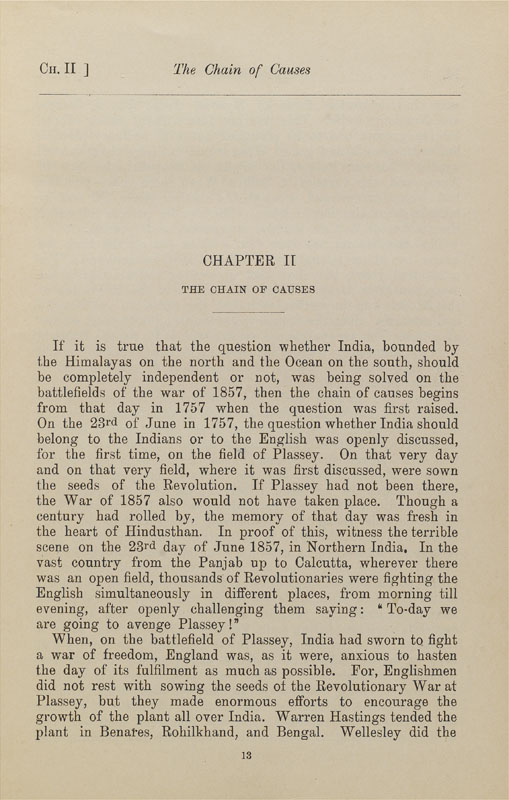Ch. II ]
The Chain of Causes
CHAPTER II
THE CHAIN OF CAUSES
If it is true that the question whether India, bounded by
the Himalayas on the north and the Ocean on the south, should
be completely independent or not, was being solved on the
battlefields of the war of 1857, then the chain of causes begins
from that day in 1757 when the question was first raised.
On the 23rd of June in 1757, the question whether India should
belong to the Indians or to the English was openly discussed,
for the first time, on the field of Plassey. On that very day
and on that very field, where it was first discussed, were sown
the seeds of the Revolution. If Plassey had not been there,
the War of 1857 also would not have taken place. Though a
century had rolled by, the memory of that day was fresh in
the heart of Hindusthan. In proof of this, witness the terrible
scene on the 23rd day of June 1857, in Northern India, In the
vast country from the Panjab up to Calcutta, wherever there
was an open field, thousands of Revolutionaries were fighting the
English simultaneously in different places, from morning till
evening, after openly challenging them saying: " To-day we
are going to avenge Plassey!"
When, on the battlefield of Plassey, India had sworn to fight
a war of freedom, England was, as it were, anxious to hasten
the day of its fulfilment as much as possible. For, Englishmen
did not rest with sowing the seeds of the Revolutionary War at
Plassey, but they made enormous efforts to encourage the
growth of the plant all over India. Warren Hastings tended the
plant in Benates, Rohilkhand, and Bengal. Wellesley did the
13
|








